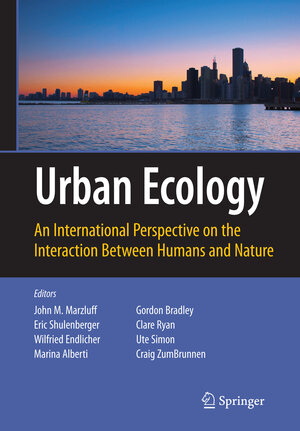
From the reviews:
„This impressive volume is a collection of important papers on Urban Ecology … . Anyone who picks up this book and starts reading, either from the start, or from anywhere in between, will not lay it down easily. … It is highly recommended for everyone interested in the nature of interactions of organisms and their environment.“ (Hannelore Hoch, Deutsche Entomologische Zeitschrift, Vol. 55 (2), 2009)
Urban Ecology
An International Perspective on the Interaction Between Humans and Nature
herausgegeben von John Marzluffto a Research Project Ernest W. Burgess Abstract The aggregation of urban population has been described by Bücher and Weber. A soc- logical study of the growth of the city, however, is concerned with the de nition and description of processes, as those of (a) expansion, (b) metabolism, and (c) mobility. The typical tendency of urban growth is the expansion radially from its central business district by a series of concentric circles, as (a) the central business district, (b) a zone of deterioration, (c) a zone of workingmen’s homes, (d)a residential area, and (e) a commuters’ zone. Urban growth may be even more fundamentally stated as the resultant of processes of organization and disorganization, like the anabolic and katabolic processes of metabolism in the human body. The distribution of population into the natural areas of the city, the division of labor, the differentiation into social and cultural groupings, represent the normal manifestations of urban metabolism, as statistics of disease, crime, disorder, vice, insanity, and suicide are rough indexes of its abnormal expression. The state of metabolism of the city may, it is suggested, be measured by mobility, de ned as a change of movement in response to a new stimulus or situation. Areas in the city of the greatest mobility are found to be also regions of juvenile delinquency, boys’ gangs, crime, poverty, wife desertion, divorce, abandoned infants, etc.






